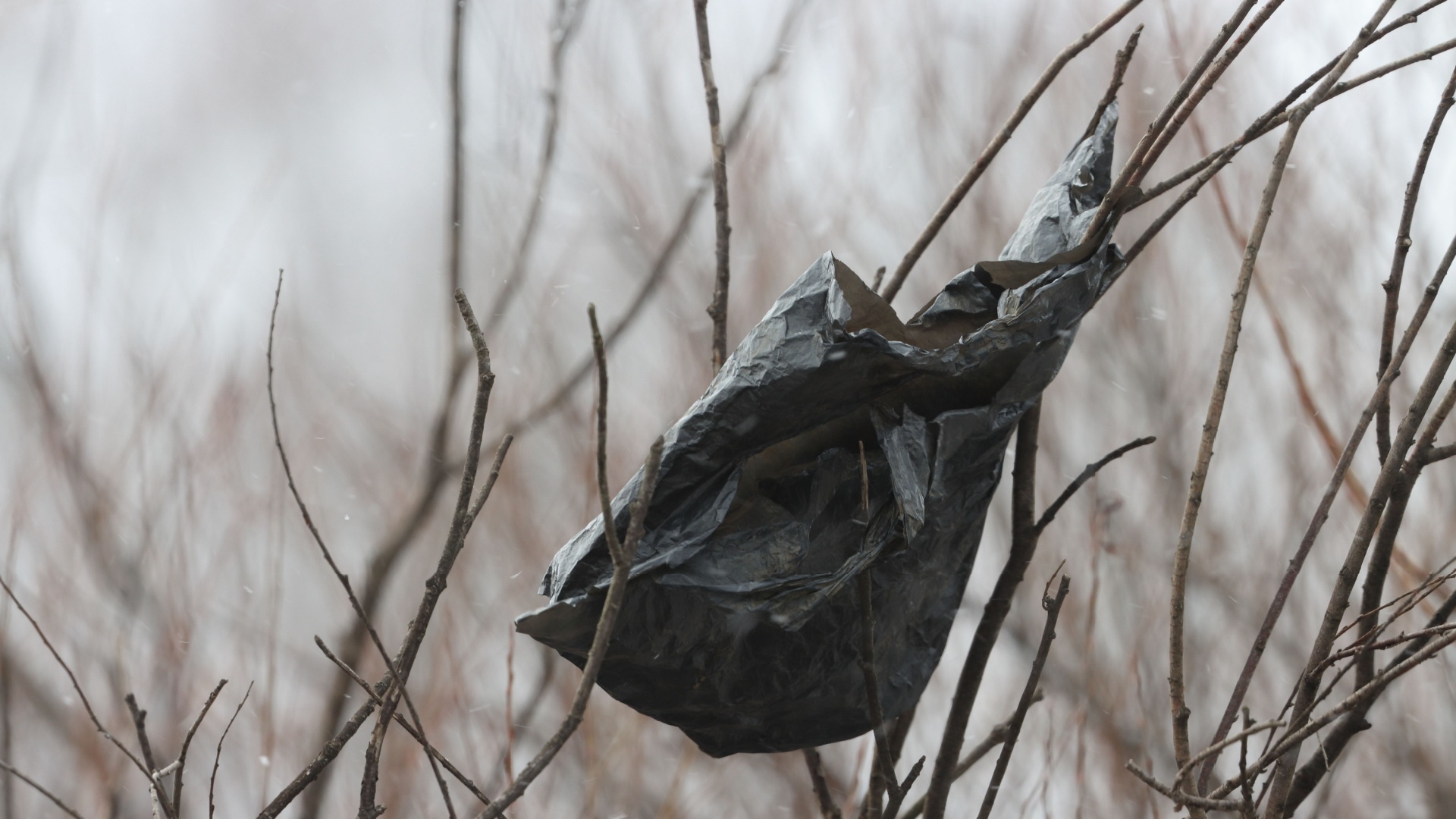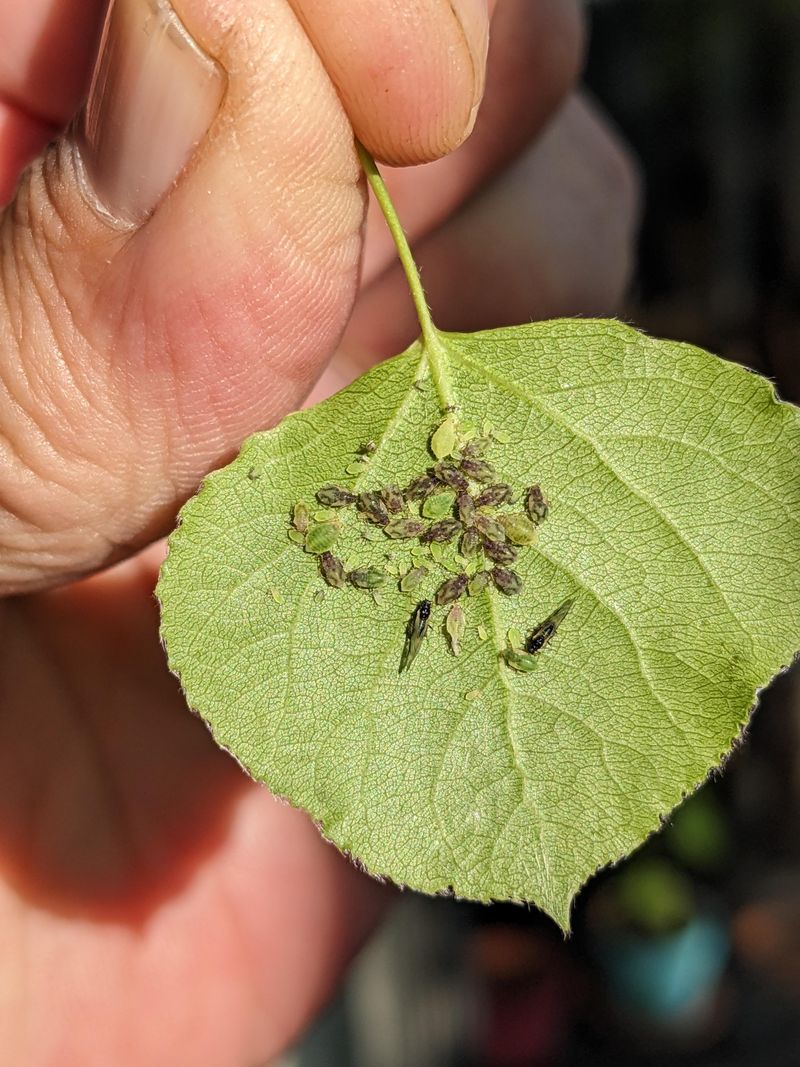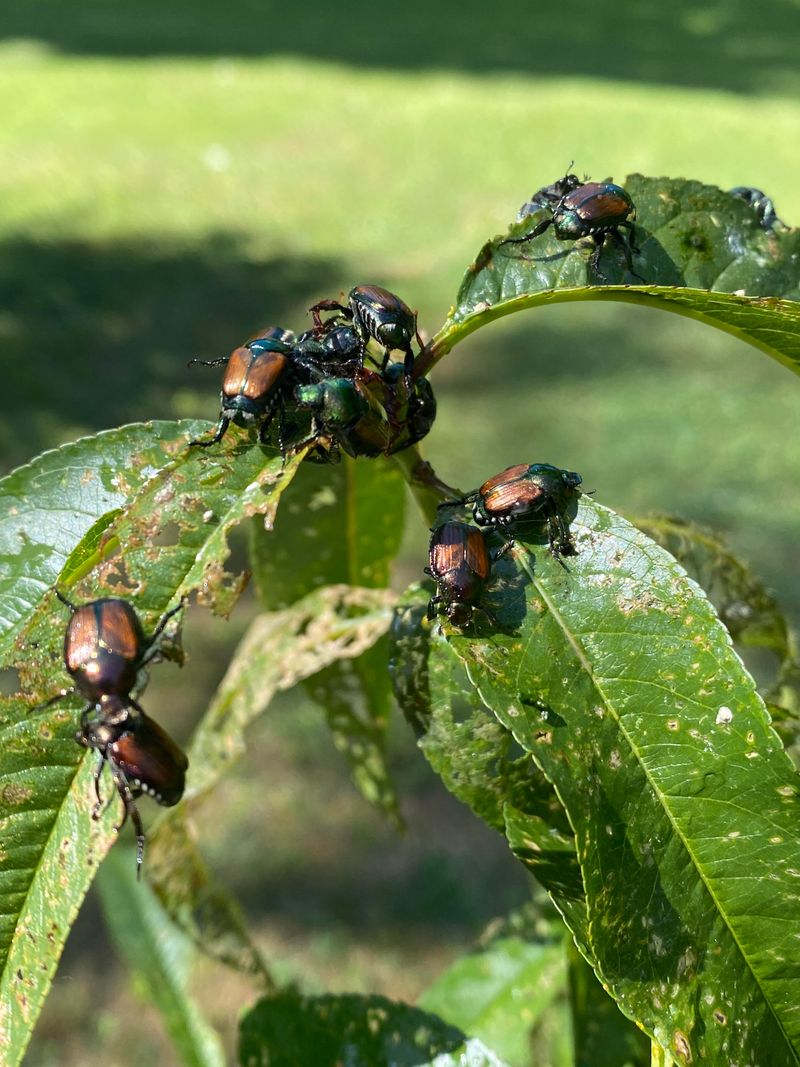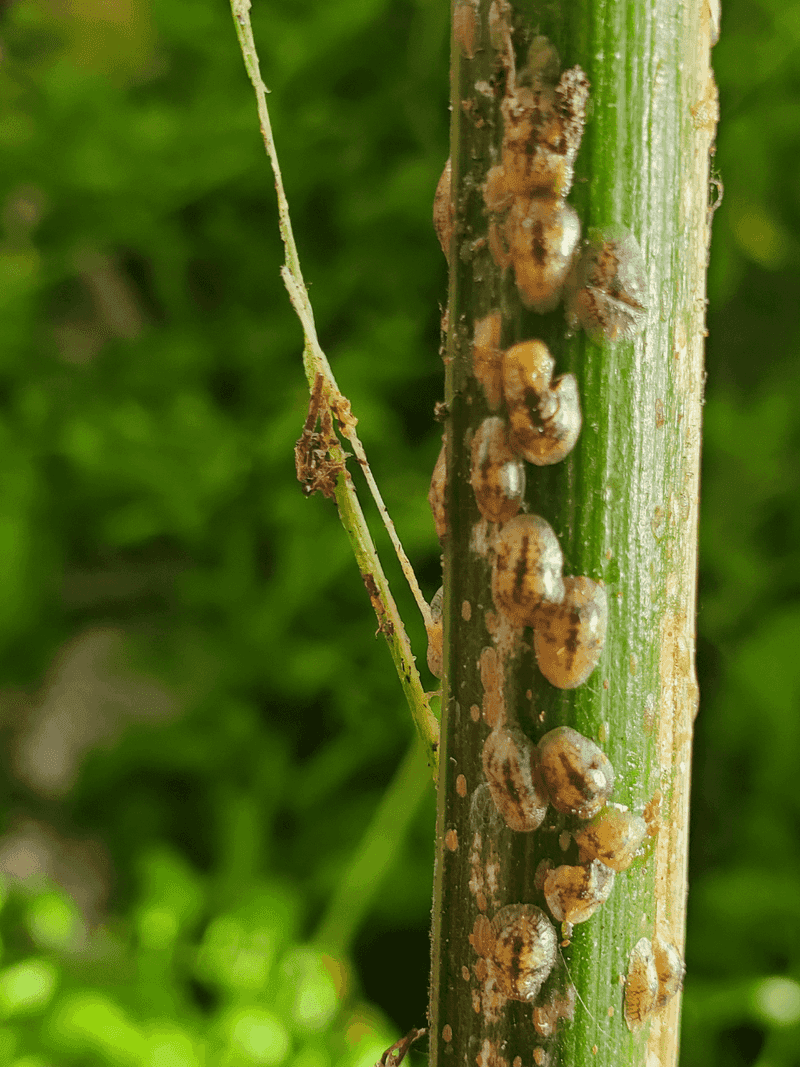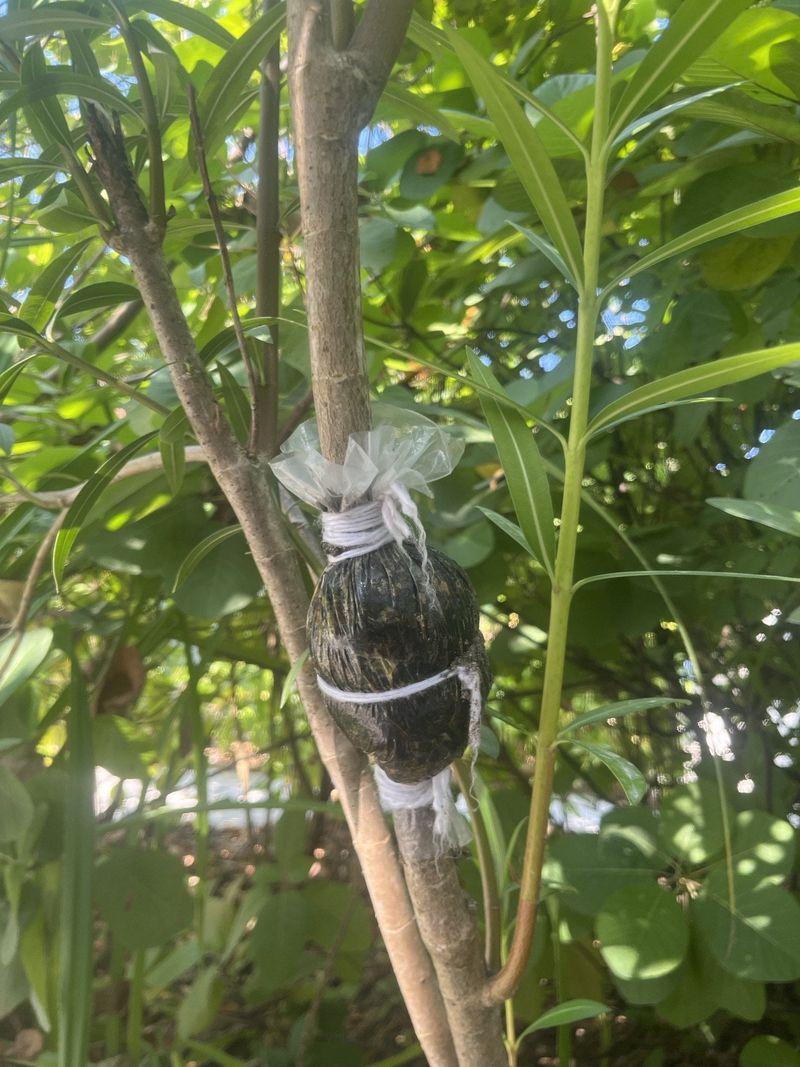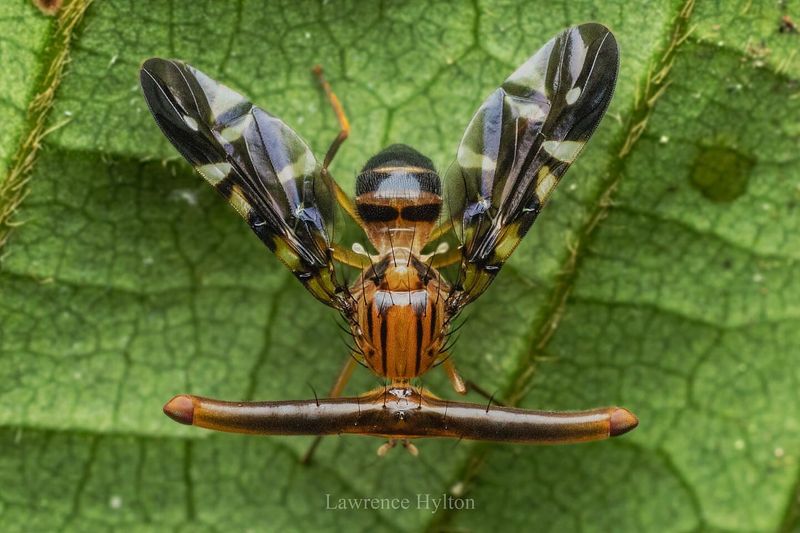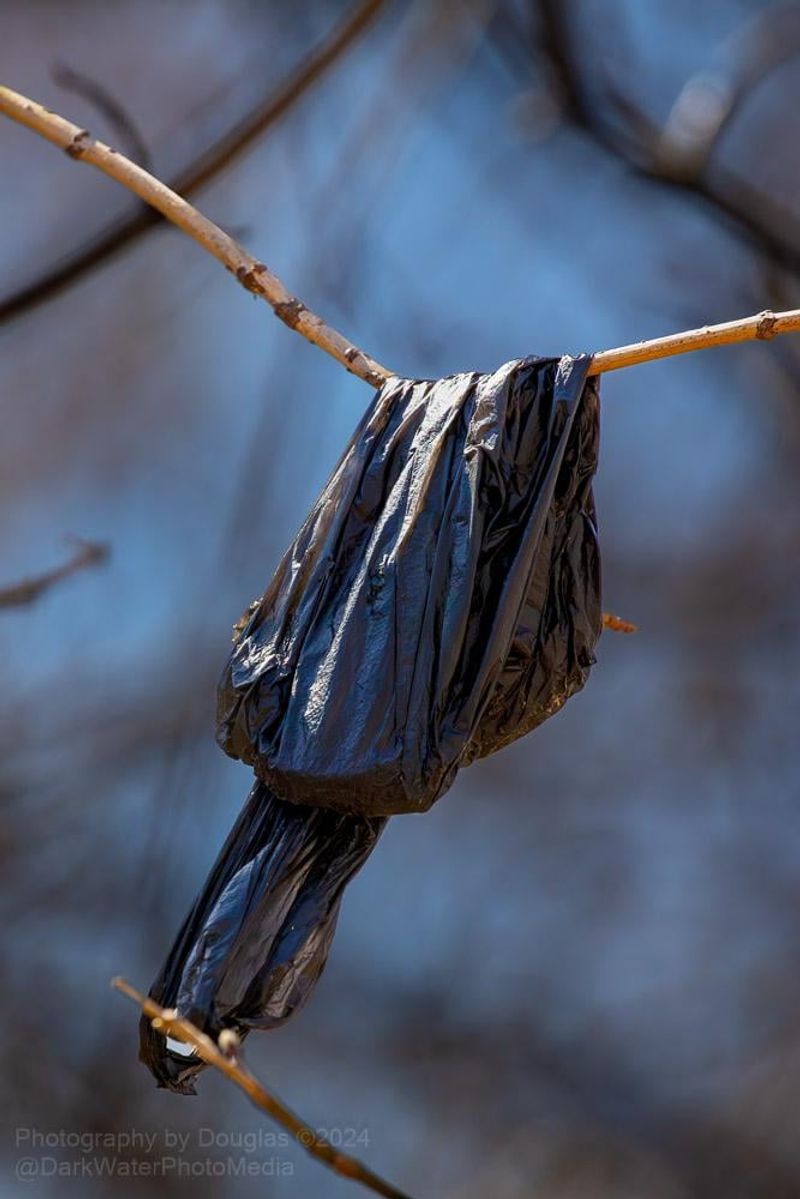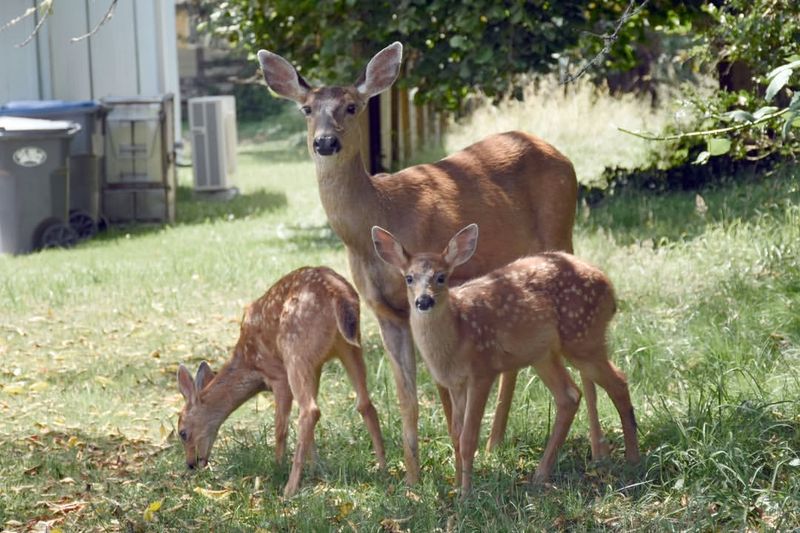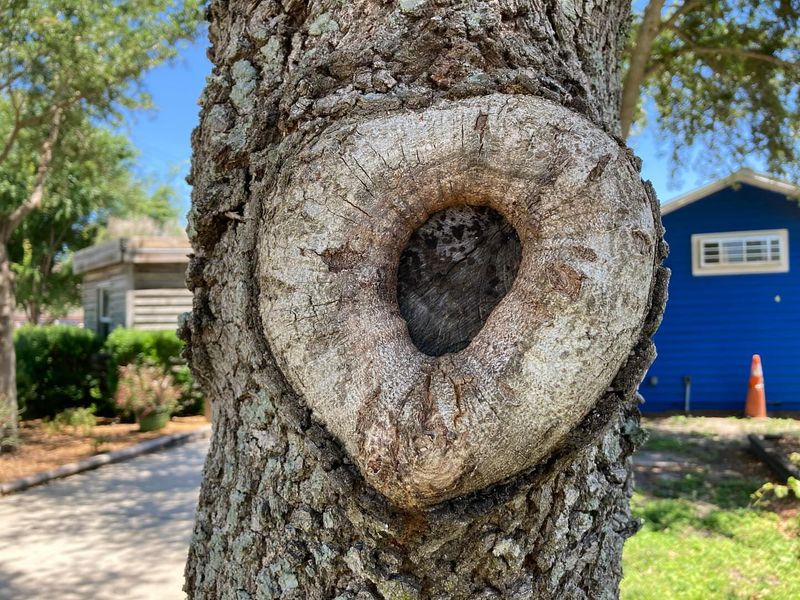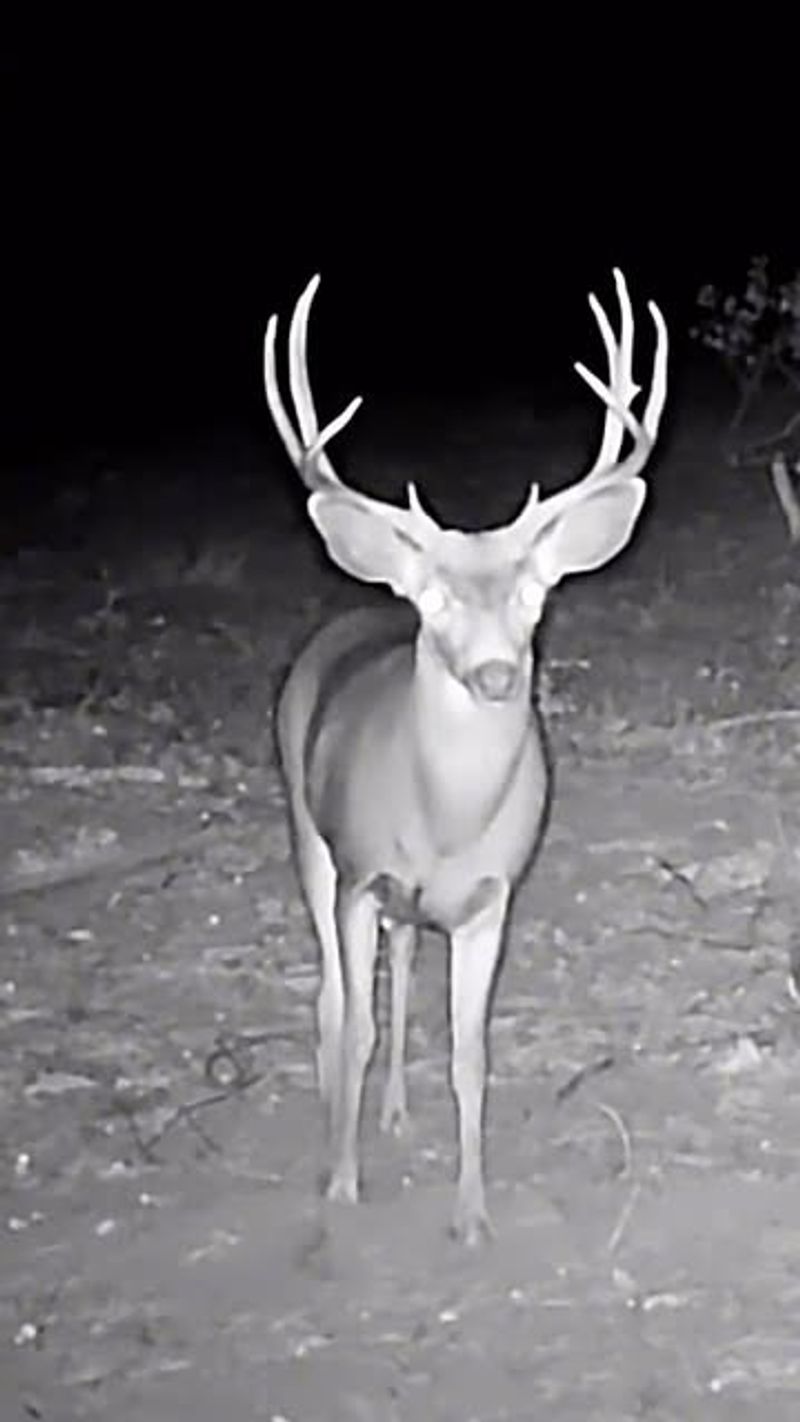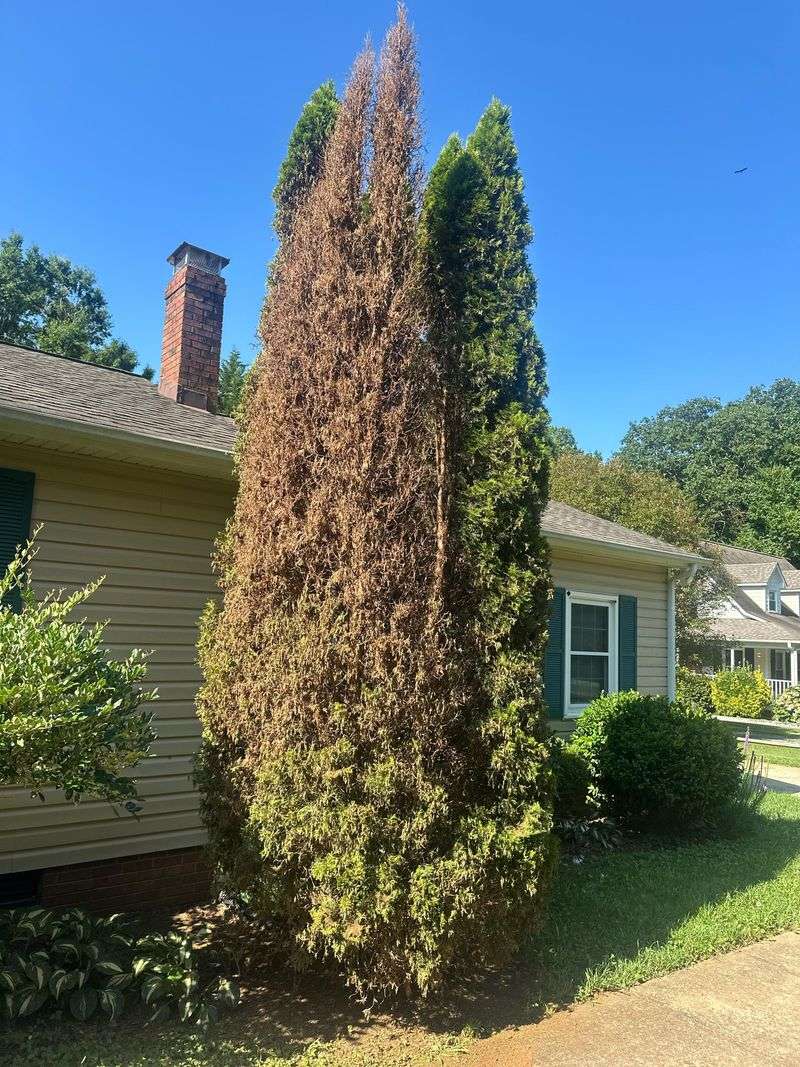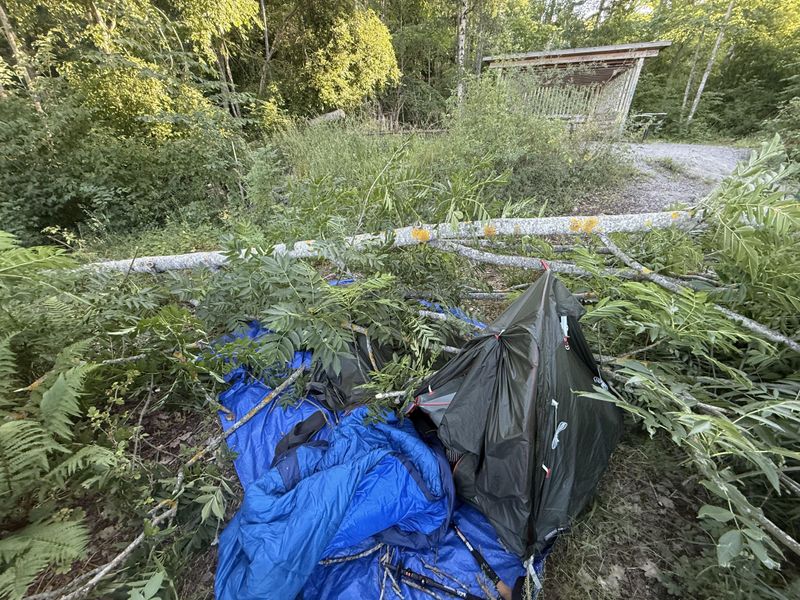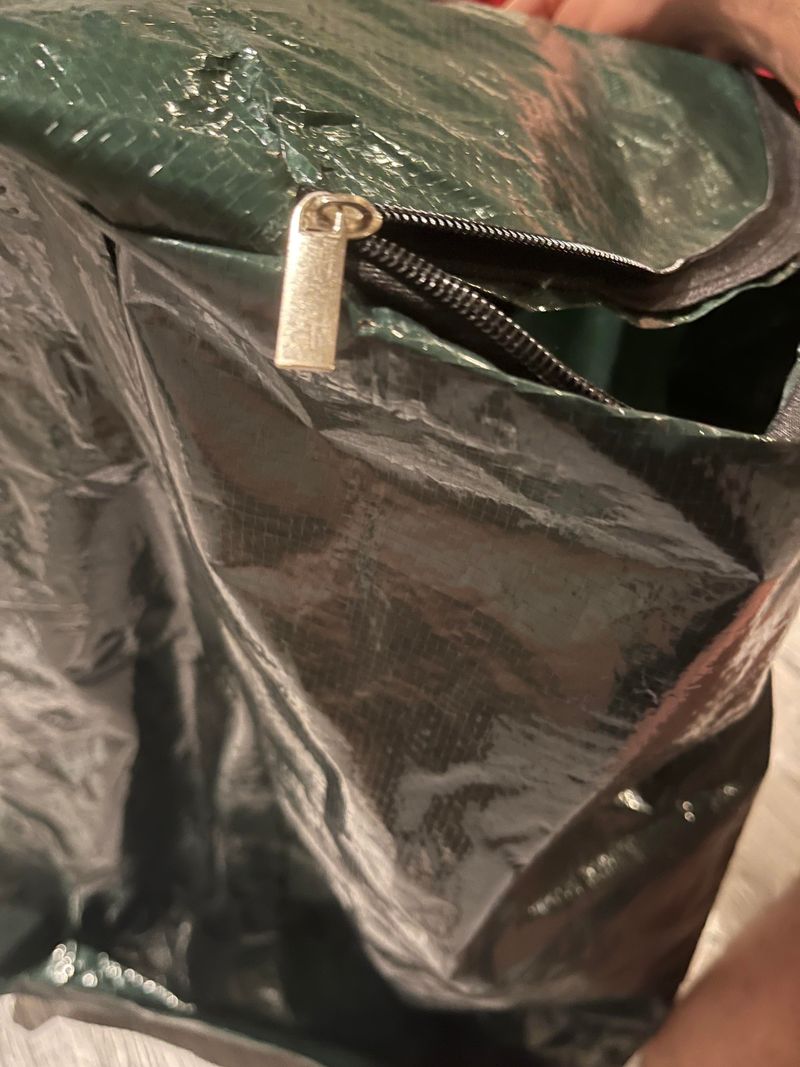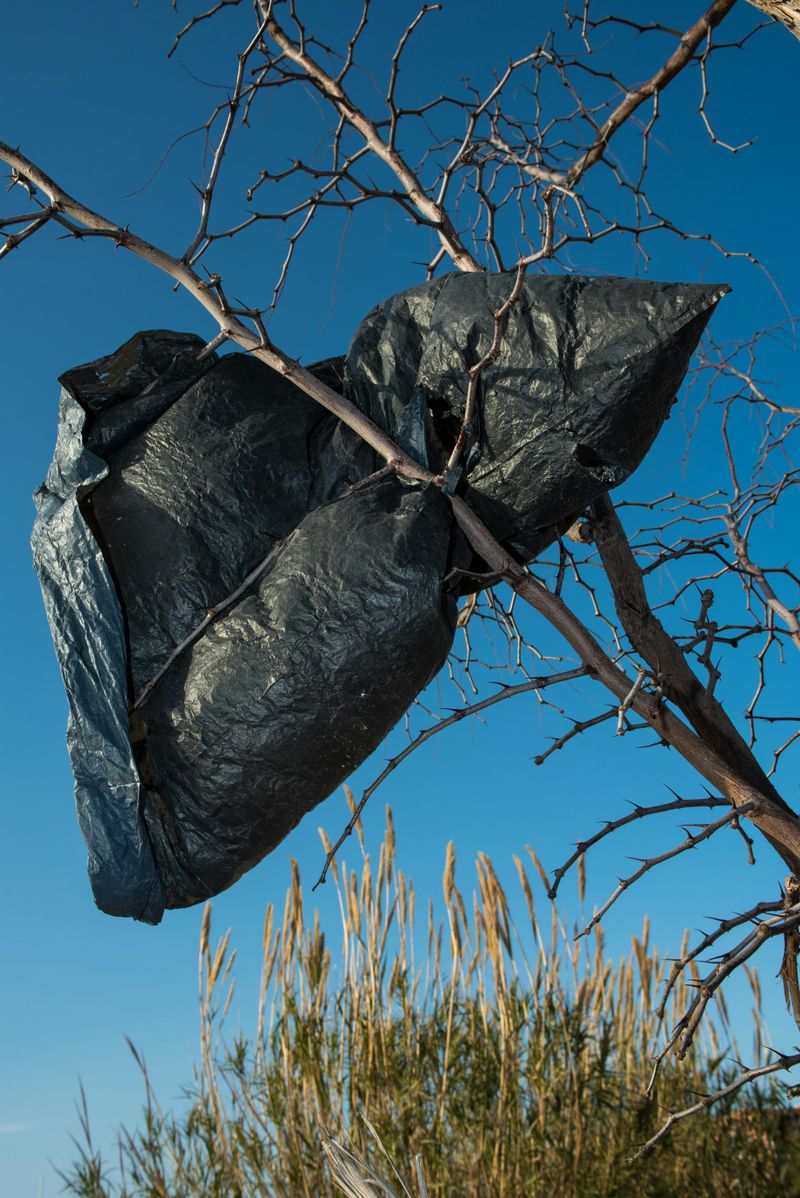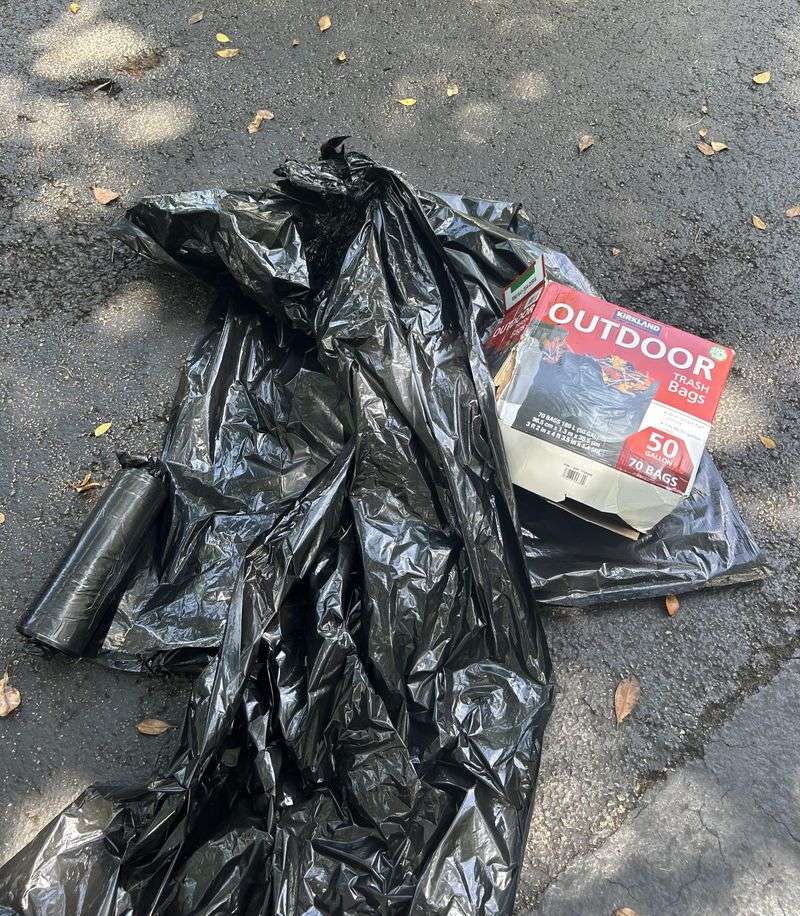Ever glance up and see a black bag hanging from a tree and wonder what on earth it’s doing there? You’re not alone—and it’s not always what you think. From pest control to pranks, gardeners and homeowners use these bags for all kinds of strange (and smart) reasons.
These 15 possibilities might surprise you—and explain what’s hanging around in your trees.
1. Pest Control Trap
Professional exterminators often use black bag traps to capture and monitor insect populations in residential areas. The dark color attracts certain pests while the elevated position prevents tampering by children or pets. Inside these bags, special attractants lure unwanted critters away from homes and gardens.
Homeowners battling persistent pest problems might spot these as part of a comprehensive treatment plan from their local pest management company.
2. Japanese Beetle Bag
Gardeners wage constant battles against these destructive insects that devour plants and flowers. The specialized black bags contain pheromones that irresistibly attract Japanese beetles, luring them away from prized garden specimens.
Once inside, the beetles become trapped and cannot escape. Hanging these bags at the perimeter of properties creates a protective barrier, significantly reducing damage to roses, fruit trees, and other vulnerable plants.
3. Insect Monitoring Station
Environmental scientists and researchers deploy these unassuming black bags as sophisticated monitoring tools. The bags contain special attractants that draw in specific insect species without harming them. Data collected helps track population trends, migration patterns, and potential disease vectors.
Universities and wildlife management agencies regularly use these stations to gather crucial information about local ecosystems and insect populations, especially in areas experiencing environmental changes or concerns.
4. DIY Wasp Decoy
Clever homeowners create fake wasp nests using black plastic bags to trick territorial wasps into avoiding their property. Wasps naturally avoid building nests near existing colonies due to competition for resources.
The simple trick requires stuffing a bag with paper, tying it closed, and hanging it in strategic locations. Many families swear by this harmless deterrent method for keeping picnics and backyard gatherings wasp-free without using harmful chemicals or expensive commercial products.
5. Homemade Fruit Fly Trap
Orchards and fruit gardens sometimes feature these ingenious traps made from black bags filled with fermenting fruit scraps or vinegar solutions. The dark color attracts fruit flies while small holes allow them to enter but not escape.
Farmers hang them strategically throughout their growing areas as an eco-friendly pest management solution. The method proves especially effective during harvest seasons when ripening fruit would otherwise attract swarms of destructive flies that can damage crops and spread disease.
6. Bird Deterrent Device
Farmers protect valuable crops by hanging black bags that flutter in the breeze, startling birds away from fruit trees and berry bushes. The unpredictable movement and dark silhouette trigger birds’ natural wariness of potential predators.
This humane solution saves thousands of dollars in potential crop losses without harming wildlife. Community gardens and small-scale farmers particularly favor this method as an affordable alternative to expensive netting or electronic scarers that require power sources.
7. Scent Bait for Wildlife
Wildlife photographers and researchers use black bags containing scent lures to attract animals for observation or photography. The elevated position prevents ground predators from accessing the bait while allowing the scent to disperse widely.
Common contents include fish oil, anise, or specialized commercial attractants. Ethical practitioners use this method temporarily and responsibly, ensuring no dependency is created and removing all materials after their session to maintain natural wildlife behavior patterns.
8. Tree Wound Covering
Arborists sometimes use black plastic coverings to protect freshly pruned or damaged trees from diseases and pests. The bag creates a protective microclimate that promotes healing while blocking rainwater that might carry pathogens.
Professional tree care specialists recommend this technique particularly for valuable specimen trees or after major storm damage. The temporary covering typically remains in place for several weeks until the tree forms natural protective barriers, then is carefully removed to prevent girdling.
9. Garden Marker or Identifier
Community gardens and botanical collections use colored bags as visual markers for trees requiring special attention. Black specifically might indicate diseased specimens needing treatment or trees scheduled for removal.
The system allows groundskeepers to quickly identify which plants need intervention without checking complicated maps or databases. Volunteer groups particularly benefit from this simple visual coding system when maintaining large public spaces with numerous trees requiring different types of care.
10. Camera or Sensor Housing
Researchers monitoring wildlife activity disguise their equipment in simple black bags to prevent theft and reduce visual disturbance to animals. The weatherproof covering protects sensitive electronics from rain and direct sunlight.
Motion-activated cameras inside capture valuable data about animal movements and behaviors. Conservation projects tracking endangered species or studying migration patterns frequently employ these camouflaged monitoring stations in public areas where conventional equipment might be disturbed or stolen.
11. Bagworm Infestation
What appears to be a black bag might actually be a colony of bagworms, destructive moths whose larvae create protective cases resembling small hanging sacks. These pests feed on tree foliage, causing significant damage if left unchecked.
The cases, constructed from silk and bits of the host plant, provide excellent camouflage. Homeowners often mistake these natural formations for man-made objects until closer inspection reveals the living inhabitants inside these distinctive protective shelters.
12. Leftover Landscaping Waste
Sometimes the explanation is surprisingly mundane – a landscape crew’s forgotten trash bag caught in branches after a windy day. Workers collecting pruned branches or leaves might temporarily hang bags on trees while working, only to accidentally leave one behind.
Urban parks and residential areas frequently experience this phenomenon after maintenance days. While not intentional, these forgotten bags can remain lodged in trees for months before being removed by maintenance staff or breaking down from weather exposure.
13. DIY Compost Bag Test
Gardening enthusiasts sometimes hang experimental compost tea bags in trees to test different brewing methods. The elevated position allows gravity to draw the nutrient-rich liquid through the organic material, creating concentrated plant food.
The process takes advantage of natural air circulation and sunlight to accelerate fermentation. Home gardeners collect the resulting liquid fertilizer to nourish vegetable gardens and flower beds, providing a sustainable alternative to commercial products while recycling kitchen scraps.
14. Hidden Geocache or Tracker
Adventure seekers participating in geocaching—a worldwide treasure hunting game—hide containers for others to find using GPS coordinates. Black bags provide excellent waterproof protection for the logbooks and small trinkets typically found inside these hidden treasures.
The elevated placement creates an additional challenge for hunters. Experienced geocachers know to look up when searching in wooded areas, making tree-hung caches particularly satisfying discoveries for those who have learned to check all dimensions during their hunts.
15. Unintended Windblown Litter
Strong winds can carry lightweight plastic bags surprising distances before they become entangled in tree branches. Once caught, these bags often remain trapped for months or even years, as their synthetic materials resist natural breakdown.
Urban areas particularly suffer from this accidental tree decoration. Environmental groups organize regular “bag hunts” in city parks to remove this unsightly pollution, which can harm wildlife and damage trees if left too long.

